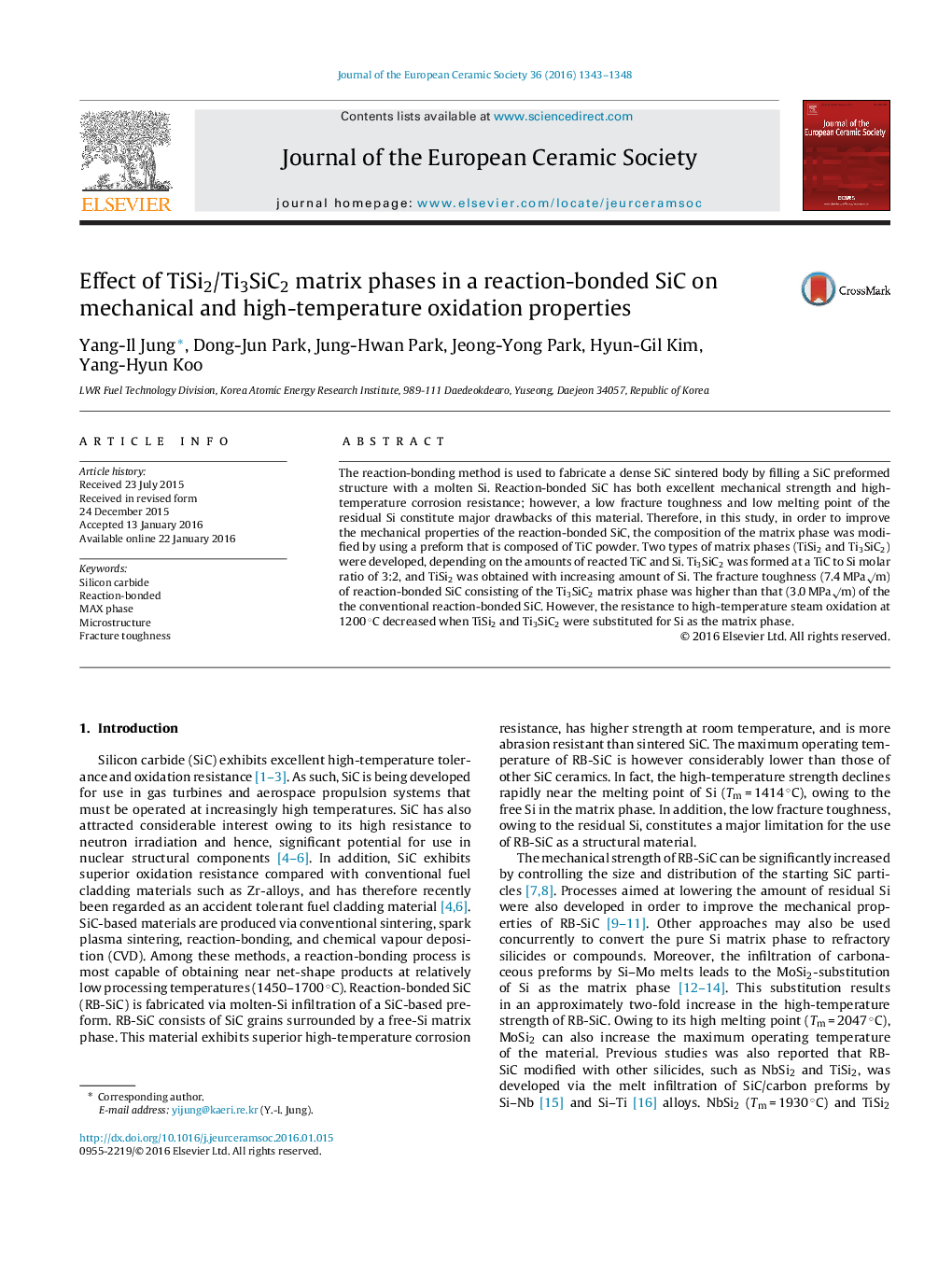| Article ID | Journal | Published Year | Pages | File Type |
|---|---|---|---|---|
| 10629311 | Journal of the European Ceramic Society | 2016 | 6 Pages |
Abstract
The reaction-bonding method is used to fabricate a dense SiC sintered body by filling a SiC preformed structure with a molten Si. Reaction-bonded SiC has both excellent mechanical strength and high-temperature corrosion resistance; however, a low fracture toughness and low melting point of the residual Si constitute major drawbacks of this material. Therefore, in this study, in order to improve the mechanical properties of the reaction-bonded SiC, the composition of the matrix phase was modified by using a preform that is composed of TiC powder. Two types of matrix phases (TiSi2 and Ti3SiC2) were developed, depending on the amounts of reacted TiC and Si. Ti3SiC2 was formed at a TiC to Si molar ratio of 3:2, and TiSi2 was obtained with increasing amount of Si. The fracture toughness (7.4 MPaâm) of reaction-bonded SiC consisting of the Ti3SiC2 matrix phase was higher than that (3.0 MPaâm) of the the conventional reaction-bonded SiC. However, the resistance to high-temperature steam oxidation at 1200 °C decreased when TiSi2 and Ti3SiC2 were substituted for Si as the matrix phase.
Related Topics
Physical Sciences and Engineering
Materials Science
Ceramics and Composites
Authors
Yang-Il Jung, Dong-Jun Park, Jung-Hwan Park, Jeong-Yong Park, Hyun-Gil Kim, Yang-Hyun Koo,
